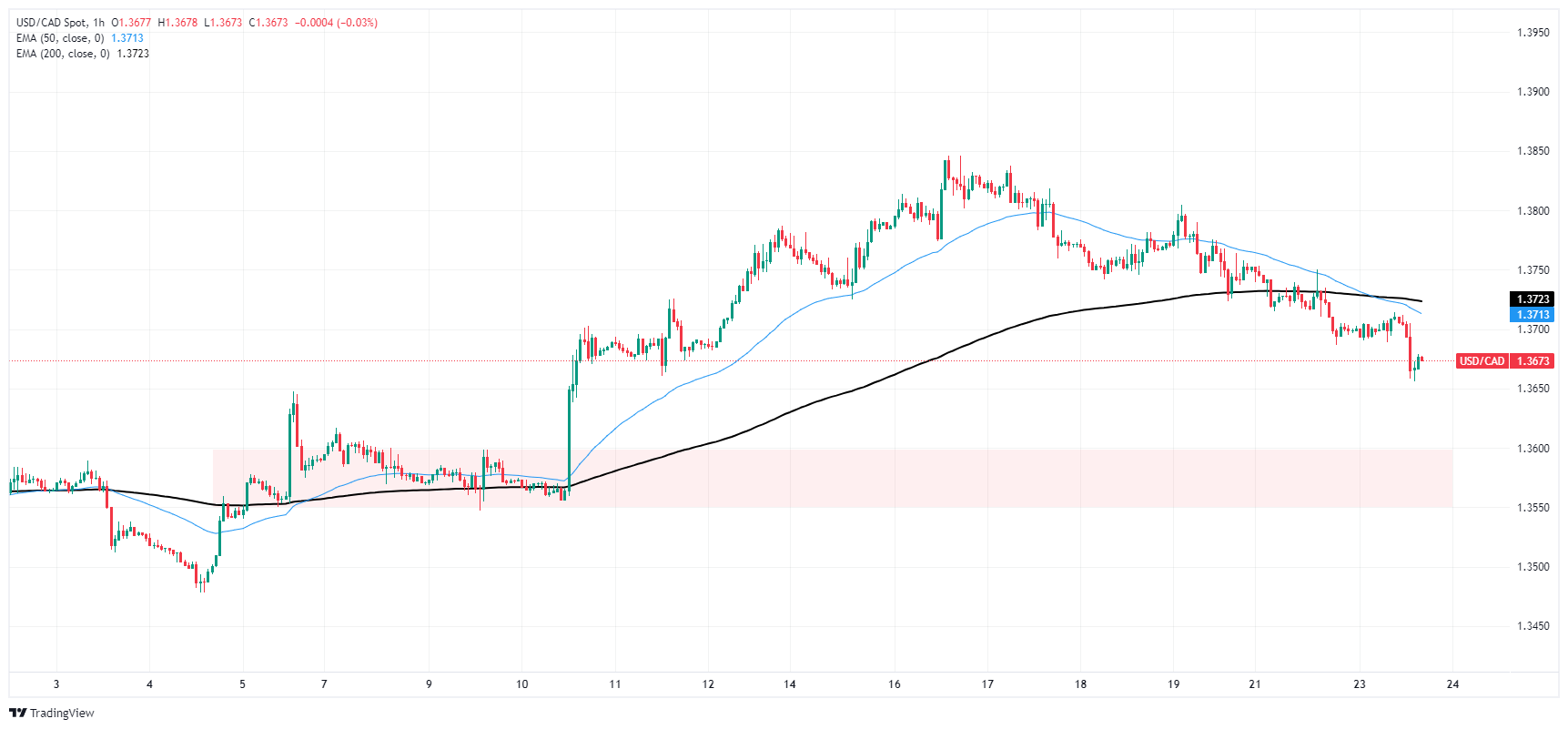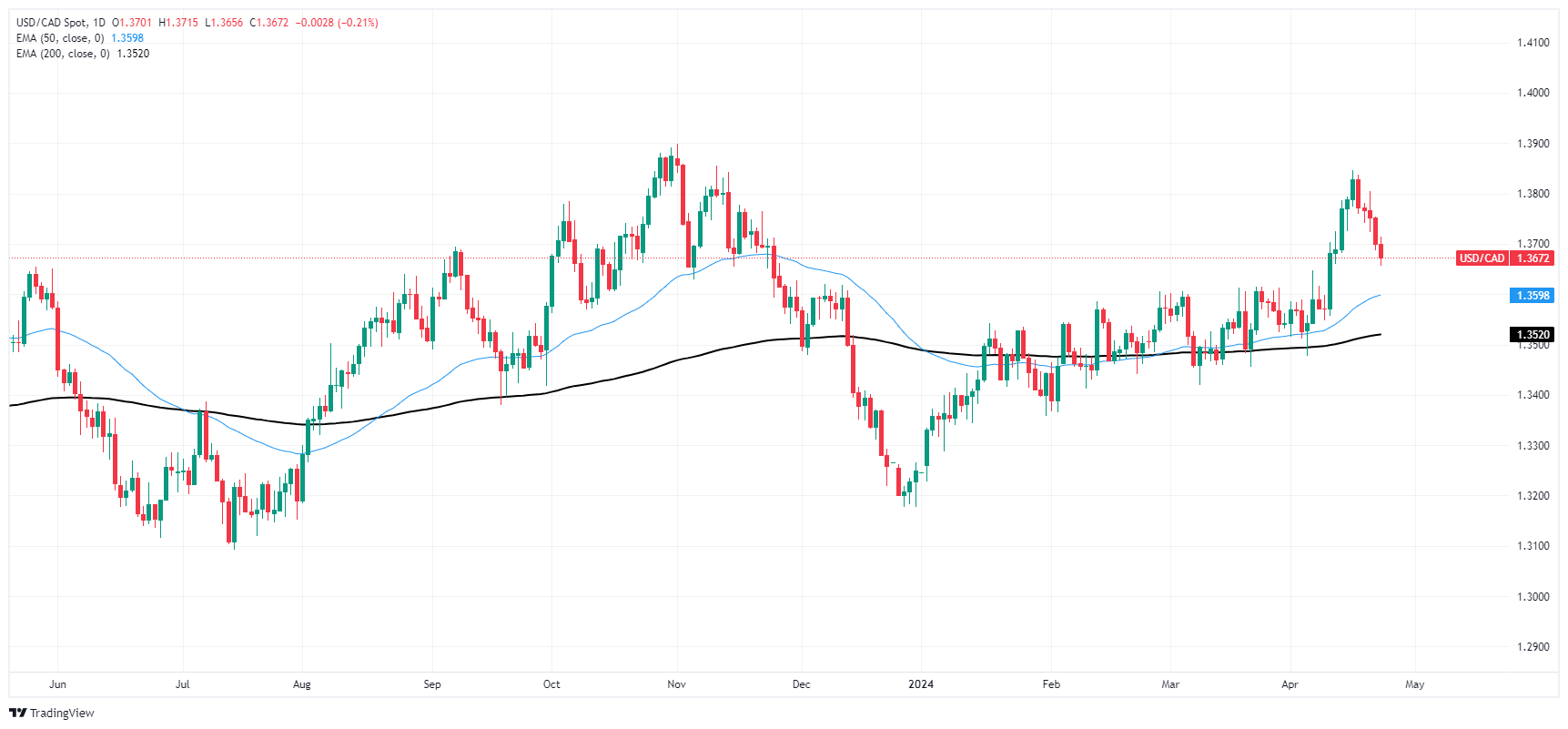Canadian Dollar recovers further ground after US PMIs bolster rate cut hopes
- Canadian Dollar finds room against softer Greenback post-PMI.
- Canada Retail Sales due Wednesday ahead of Thursday’s US GDP.
- Despite PMI gains, CAD upside remains limited as Crude Oil softens further.
The Canadian Dollar (CAD) stepped higher against the US Dollar (USD) after US Purchasing Managers Index (PMI) figures came in softer than expected. Easing US economic activity figures are feeding into market hopes that the US domestic economy will soften enough to encourage the US Federal Reserve (Fed) to move sooner on rate cuts.
Canada releases its latest Retail Sales figures on Wednesday, but the broader market focus will be on the US Gross Domestic Product (GDP) figures due on Thursday. The US Personal Consumption Expenditure (PCE) Price Index will print on Friday.
Daily digest market movers: Canadian Dollar steps up on softer Greenback
- US PMIs softened unexpectedly on Tuesday. The S&P Global Manufacturing PMI came in at 49.9, dropping below the 50.0 level for the first time in four months.
- The Services PMI component also shed weight, printing at 50.9 versus the previous 51.7.
- Despite a weaker US Dollar, the Canadian Dollar is mixed against the broader major currency boards as declining Crude Oil prices hobble the CAD’s stance.
- Wednesday’s Canadian Retail Sales for February are expected to recover to 0.1% from the previous month’s -0.3%.
- Canadian Retail Sales Excluding Automobiles are expected to hold flat at 0.0% compared to January’s 0.5%.
- US annualized quarterly GDP on Thursday is forecast to tick down to 2.5% from the previous 3.4%.
- Friday’s US Core PCE Price Index for March is expected to hold steady at 0.3%.
- According to the CME’s FedWatch Tool, rate markets are pricing in a 70% chance of at least a 25 basis point rate cut from the Fed in September.
Canadian Dollar price today
The table below shows the percentage change of Canadian Dollar (CAD) against listed major currencies today. Canadian Dollar was the strongest against the US Dollar.
| USD | EUR | GBP | CAD | AUD | JPY | NZD | CHF | |
| USD | -0.40% | -0.74% | -0.21% | -0.51% | -0.01% | -0.29% | -0.05% | |
| EUR | 0.40% | -0.34% | 0.19% | -0.10% | 0.39% | 0.12% | 0.33% | |
| GBP | 0.73% | 0.33% | 0.52% | 0.23% | 0.72% | 0.45% | 0.68% | |
| CAD | 0.21% | -0.19% | -0.52% | -0.29% | 0.20% | -0.07% | 0.15% | |
| AUD | 0.51% | 0.10% | -0.24% | 0.28% | 0.50% | 0.22% | 0.43% | |
| JPY | 0.01% | -0.42% | -0.77% | -0.22% | -0.51% | -0.29% | -0.04% | |
| NZD | 0.29% | -0.12% | -0.45% | 0.07% | -0.21% | 0.28% | 0.22% | |
| CHF | 0.06% | -0.35% | -0.70% | -0.17% | -0.44% | 0.05% | -0.24% |
The heat map shows percentage changes of major currencies against each other. The base currency is picked from the left column, while the quote currency is picked from the top row. For example, if you pick the Euro from the left column and move along the horizontal line to the Japanese Yen, the percentage change displayed in the box will represent EUR (base)/JPY (quote).
Canadian Dollar technical analysis: CAD poised for further gains, but heavy support zone looms
The Canadian Dollar was mixed on Tuesday. It gained around a fifth of a percent against the US Dollar and the Japanese Yen (JPY). On the downside, it has shed half a percent against the Pound Sterling (GBP).
The USD/CAD shed the 1.3700 handle as the Greenback backslides against the Canadian Dollar. The pair hit an intraday support zone near 1.3660, and further down is approaching a significant demand zone near 1.3600. With Tuesday’s downside momentum, the pair is on pace to close in the red for a fifth consecutive trading day.
Major support is currently priced at the 200-day Exponential Moving Average (EMA) just north of the 1.3500 handle. A resurgence of US Dollar buying could drag the USD/CAD back up to the last swing high near 1.3850.
USD/CAD hourly chart
USD/CAD daily chart
Canadian Dollar FAQs
The key factors driving the Canadian Dollar (CAD) are the level of interest rates set by the Bank of Canada (BoC), the price of Oil, Canada’s largest export, the health of its economy, inflation and the Trade Balance, which is the difference between the value of Canada’s exports versus its imports. Other factors include market sentiment – whether investors are taking on more risky assets (risk-on) or seeking safe-havens (risk-off) – with risk-on being CAD-positive. As its largest trading partner, the health of the US economy is also a key factor influencing the Canadian Dollar.
The Bank of Canada (BoC) has a significant influence on the Canadian Dollar by setting the level of interest rates that banks can lend to one another. This influences the level of interest rates for everyone. The main goal of the BoC is to maintain inflation at 1-3% by adjusting interest rates up or down. Relatively higher interest rates tend to be positive for the CAD. The Bank of Canada can also use quantitative easing and tightening to influence credit conditions, with the former CAD-negative and the latter CAD-positive.
The price of Oil is a key factor impacting the value of the Canadian Dollar. Petroleum is Canada’s biggest export, so Oil price tends to have an immediate impact on the CAD value. Generally, if Oil price rises CAD also goes up, as aggregate demand for the currency increases. The opposite is the case if the price of Oil falls. Higher Oil prices also tend to result in a greater likelihood of a positive Trade Balance, which is also supportive of the CAD.
While inflation had always traditionally been thought of as a negative factor for a currency since it lowers the value of money, the opposite has actually been the case in modern times with the relaxation of cross-border capital controls. Higher inflation tends to lead central banks to put up interest rates which attracts more capital inflows from global investors seeking a lucrative place to keep their money. This increases demand for the local currency, which in Canada’s case is the Canadian Dollar.
Macroeconomic data releases gauge the health of the economy and can have an impact on the Canadian Dollar. Indicators such as GDP, Manufacturing and Services PMIs, employment, and consumer sentiment surveys can all influence the direction of the CAD. A strong economy is good for the Canadian Dollar. Not only does it attract more foreign investment but it may encourage the Bank of Canada to put up interest rates, leading to a stronger currency. If economic data is weak, however, the CAD is likely to fall.




